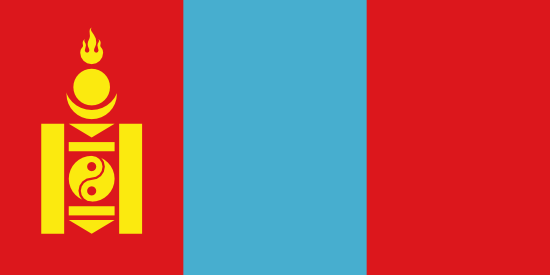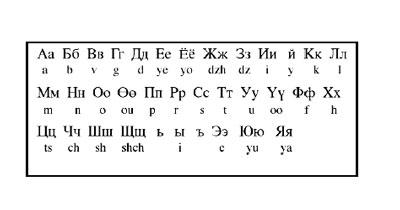Mongolia

Horses, yaks and promising steppes, this country sometimes called "the country of the blue sky" has some great surprises in store for us.
The video of our visit to Mongolia
Where we learn a lot about hospitality ...
Where is Mongolia?
Its flag:
General data
– Population : 3,226,516 inhabitants (2013 estimate).
– Capital : Ulaanbaatar (over 30% of the country's population).
– Density: 2 hab./km².
– Diet : republic, since 1992.
– Official language : mongol khalkha.
– Religions : 86.5% of Tibetan Buddhists mixed with shamanic beliefs, 5.9% of Muslims (Kazakhs).
– Change : tugrik (1 euro = 2100 tugrik)
– Main activities : breeding, mining, trade in skins, wools and leathers.
– UNESCO World Heritage Sites: the Orkhon Valley Cultural Landscape (2004); the Mongolian Altai Petroglyph Sets (2011).
- Jet lag : 7h compared to France.
Speaking and writing in Mongolia
The language of this country is and the author.
Since 1935, the Mongolian alphabet has been a Cyrillic alphabet" and he owns 35 letters. These are almost the same letters used in Russia, but the pronunciation is different.
Before 1935, this is how we wrote in Mongolia:
History
L’Empire mongol or Turkish-Mongol Empire, the largest continuous empire having never existed, was founded at the beginning of the 13the century by Genghis Khan, his sons and grandsons and their armies. Mongolia was the center of this empire.
Mongolia was then ruled by the Qing (Chinese) dynasty from the 17th to the 20th century.
In 1911, independence of Mongolia was proclaimed.
In the 20th century, Mongolia was officially independent, but its policy was aligned with that of the USSR. After the end of the Cold War and the fall of communism, the country became a democracy in 1992.
Geography
The country has common borders with the China (4,673 km of common borders) and the Federation of Russia (3,005 km of common borders). The average altitude is 1,580 m.
The country has no access to the sea. The landscape consists of vast plains (steppes) to the east and west, from mountains to the west (Khangai and Altai) and to the north; in the south extends the gobi desert, the largest desert in Asia.
Climate and weather
The weather is continental, with very marked seasons: very hot summers, very cold winters (- 40 ° C). The seasons are therefore the same as in France, but much more marked.
Mongolian climate is sunny (270 days of sunshine per year), mountainous and particularly dry. Rainfall is very low, but collected over the summer months (July and August).
Another major feature of the Mongolian climate is the vents violent, which blow throughout the year, especially in the spring.
Economy
Almost a third of Mongols have a nomadic lifestyle, they make a living frombreeding, from wheat cultivation, but alsoexport of textile products.
The country has great growth capacities with the field ofmineral extraction (copper, coal, gold, uranium, precious stones…). But because of the poverty of the road and rail network, these resources are difficult to exploit.
Mongolian economy has many strengths: raw materials, livestock, tourism; but they are too little exploited. Suddenly, Mongolia is one of the most indebted of the world. And the economic crisis in Russia and Japan, which brought aid to Mongolia, only worsened the situation.
Cuisine
Mongolian cuisine is made up of simple elements and little variety. The Mongols are great lovers of meat, fresh or dried.
The meat (makh), especially mutton, is indeed present in all dishes, and accompanies pasta or rice (goulash style), soups (chol). She can also stuff donuts (khuchour), ravioli (buuz).
The vegetables (cabbage, potatoes, carrots) are often only present in small quantities.
The rice (tsagaan budaa) or pasta is the bulk of almost every dish, including soup, which is the single dish regularly eaten under the yurt. It's even the only one that many breeders know and eat at every meal, twice a day.
At noon and in summer, the Mongols mainly consume dairy products (various cheeses, fermented mare's milk, milk cream, etc.) with donuts (drill).
Drinks
Four specialties!
- The salted milk tea (suutei tsaï), infusion of black tea from China, mixed with milk, salt and sometimes butter. It is the essential complement to meals.
– L’aïrag, fermented mare's milk, alcohol content at 2 or 3 °. It is the national drink.
– L’arkhi, it is distilled cow's milk, alcohol content around 12 °, or even much more if it is distilled several times.
- The vodka is emerging as a Mongolian specialty. Imported from Russia or made locally, it brightens up the holidays, but also wreaks havoc among the population.
Sports
Traditional sports activities are the wrestling, archery and horse racing. They are honored during Naadam, a traditional celebration that has become a national holiday on July 11 and 12.
Thank you The backpacker !



![mongol-alphab-tradtxt[1]](http://www.intothewheel.com/wp-content/uploads/2015/05/mongol-alphab-tradtxt1.jpg)